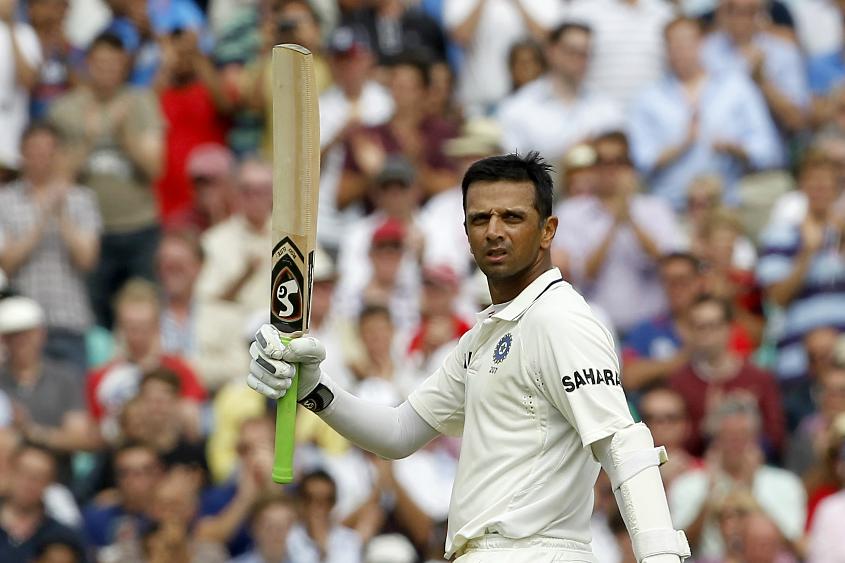
In the three Tests that Rahul Dravid, now India’s coach, played at The Oval (2002, 2007 and 2011), he never made less than a half-century. The 217 in his first Test there came in a high-scoring draw, while the superb 146 not out in his last Test in England wasn’t enough to stave off an innings defeat. But it was the middle Test, where he made 55 and 12 (from 96 balls), that garnered the most headlines.
That 2007 tour was played out in the shadow of India’s first-round exit from the World Cup in the Caribbean. Greg Chappell may have left the coaching job, but in the eyes of many in the media, Dravid, who had been captain since 2005, was tainted by association. When India arrived in England, they didn’t even have a full-time coach. Chandu Borde did duty as manager, but Dravid’s remit included even trivial details like making sure enough balls were made available for net sessions.
A group of players intent on redemption after the World Cup debacle played out of their skins after narrowly saving the first Test at Lord’s. A collective batting effort and the brilliance of the pace attack led by Zaheer Khan then gave India victory at Trent Bridge. At The Oval, India piled up 664 and then established a lead of 319 on first innings. With almost two days remaining, enforcing the follow-on was an option.
Dravid didn’t take it. India batted 58 overs to set England an improbable target of 500. Dravid’s contribution was that momentum-killing 12. The knives that had been sheathed after the victory at Nottingham began to be sharpened with a vengeance once Kevin Pietersen’s final-day century steered England to a draw.
The press box was abuzz with talk of Dravid’s ‘negativity’, with some even going so far as to accuse him of cowardice. The story would have become even bigger but for one man killing it stone dead. Almost as soon as he arrived for his post-match press conference, Michael Vaughan, England’s greatly respected and admired captain, was asked what he thought of Dravid’s decision.
“If I’d have been in his position, I’d have done exactly the same,” he said. Boom. Story over.
Dravid and his side didn’t allow any of the external toxicity to come in the way of their goal. Till date, that is India’s only series win in England since 1986. But as he helps Rohit Sharma and team prepare for the World Test Championship final, Dravid will doubtless stress on the need to stay cocooned in a headline-free bubble.
As has been chronicled previously in these pages, The Oval was also the setting for one of Indian cricket’s greatest triumphs, that 1971 Test when Bhagwat Chandrasekhar, his Mill-Reef quicker delivery and other variations proved far too much for England, then the unofficial World Champions.
Also Read: Can India Find the Knockout Mindset in the WTC Final at The Oval?
But as India prepare for the challenge that will be posed by the like Australian attack of Pat Cummins, Mitchell Starc, Josh Hazlewood and Nathan Lyon, it’s another Oval Test the batters can take inspiration from. Back in 1979, a wretched tour that had seen all three World Cup games lost, India needed to win at The Oval to square the four-Test series.
Set an imposing 438, they were cruising at 366-1 before Ian Botham, then the world’s most formidable all-round cricketer, intervened. India would eventually finish agonisingly short on 429-8, and the headlines were all about the batting of one man. Remember too that this was an attack that had Botham, Bob Willis and Mike Hendrick, each with distinguished Test records and intimate knowledge of bowling in this conditions.
“Gavaskar’s inspiring and technically flawless 221 earned him the Man of the Match award and brought that rarity in recent Tests in England – a final day charged with interest,” said the Wisden Almanack report. “Botham played the major part in preventing an Indian victory and confirmed his status as Man of the Series. As the team fought each other to a standstill, there were mainly Englishmen in the crowd who would not have displayed their customary dejection at a Test defeat.”
So accomplished was Gavaskar’s batting that day that John Arlott, the legendary journalist and broadcaster, would later include it in a video compilation on the ten greatest innings that he had watched, going back to Sir Donald Bradman’s day.
It will help India immensely that two years ago, the man who now leads them played a knock that was right up there with Gavaskar’s magnum opus. Having lost the toss, India were skittled for just 191. England then racked up a potentially crucial 99-run lead, with the middle and lower order rescuing them from the depths of 62 for 5.
Rohit responded with a masterful 127. The others in the top four also made significant contributions, and a late surge from Rishabh Pant and Shardul Thakur swung the game decisively in India’s favour. And then after England had nudged their way to 100-0 in pursuit of 368, the bowlers stepped in to deliver a crushing 157-run win, India’s first at The Oval in 50 years.
This famous ground hasn’t hosted a Test in June. But when Rohit and team stepped out on to the famous turf, there will be no shortage of memories to keep them company. Dravid will be among the millions who hope they can create some new ones.



